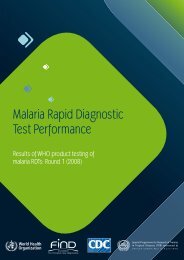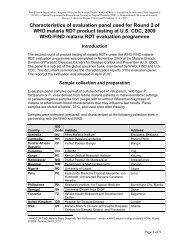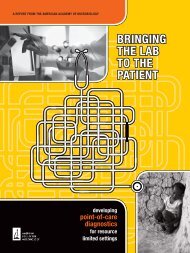MGIT TM Procedure Manual - Foundation for Innovative New ...
MGIT TM Procedure Manual - Foundation for Innovative New ...
MGIT TM Procedure Manual - Foundation for Innovative New ...
Create successful ePaper yourself
Turn your PDF publications into a flip-book with our unique Google optimized e-Paper software.
2. Principle of detection and drug susceptibility testing<br />
Section I: Principle of <strong>Procedure</strong>s<br />
In addition to Middlebrook 7H9 liquid media, the <strong>MGIT</strong> tube contains an oxygen-quenched<br />
fluorochrome, tris 4, 7-diphenyl-1, 10-phenonthroline ruthenium chloride pentahydrate,<br />
embedded in silicone at the bottom of the tube. During bacterial growth within the tube, the<br />
free oxygen is utilized and is replaced with carbon dioxide. With depletion of free oxygen,<br />
the fluorochrome is no longer inhibited, resulting in fluorescence within the <strong>MGIT</strong> tube when<br />
visualized under UV light. The intensity of fluorescence is directly proportional to the<br />
extent of oxygen depletion.<br />
<strong>MGIT</strong> tubes may be incubated at 37ºC and read manually under a UV light or entered into a<br />
<strong>MGIT</strong> 960 instrument where they are incubated and monitored <strong>for</strong> increasing fluorescence<br />
every 60 minutes. Growth of bacteria as well as mycobacteria increases the fluorescence. In<br />
case of M. tuberculosis, at the time of positivity, there are approximately 10 5 – 10 6 colony<strong>for</strong>ming<br />
units (CFU) per ml of medium. The instrument declares a tube negative if it remains<br />
negative <strong>for</strong> six weeks (42 days). The detection of growth can also be visually observed by<br />
the presence of a non-homogeneous light turbidity or small granular/flaky appearance in the<br />
medium. Growth of some N<strong>TM</strong> (most commonly rapid growers) results in light turbidity,<br />
while contaminating bacteria generally produce heavy turbidity.<br />
Drug susceptibility testing can be per<strong>for</strong>med based on the same principle. Two <strong>MGIT</strong> tubes<br />
are inoculated with the test culture. A known concentration of a test drug is added to one of<br />
the <strong>MGIT</strong> tubes, and growth is compared with the <strong>MGIT</strong> tube without the drug (growth<br />
control). If the test drug is active against the isolated mycobacteria, it will inhibit the growth<br />
and thus there will be suppression of fluorescence, while the growth control will grow<br />
uninhibited and will have increasing fluorescence. Growth is monitored by the BACTEC<br />
960 instrument which automatically interprets results as susceptible or resistant.<br />
<strong>MGIT</strong> <strong>TM</strong> <strong>Procedure</strong> <strong>Manual</strong> 11




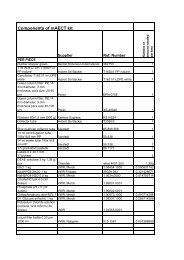
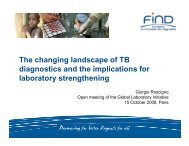
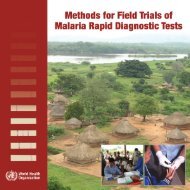
![Download in English [pdf 2Mb] - Foundation for Innovative New ...](https://img.yumpu.com/49580359/1/184x260/download-in-english-pdf-2mb-foundation-for-innovative-new-.jpg?quality=85)

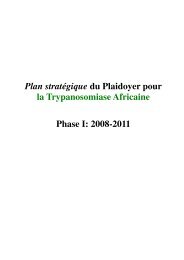
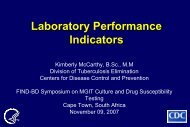
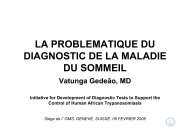
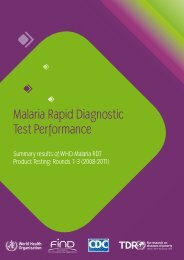
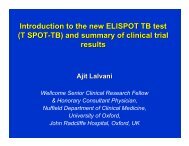
![New laboratory diagnostic tools for tuberculosis control [.pdf]](https://img.yumpu.com/43339906/1/190x135/new-laboratory-diagnostic-tools-for-tuberculosis-control-pdf.jpg?quality=85)
